News
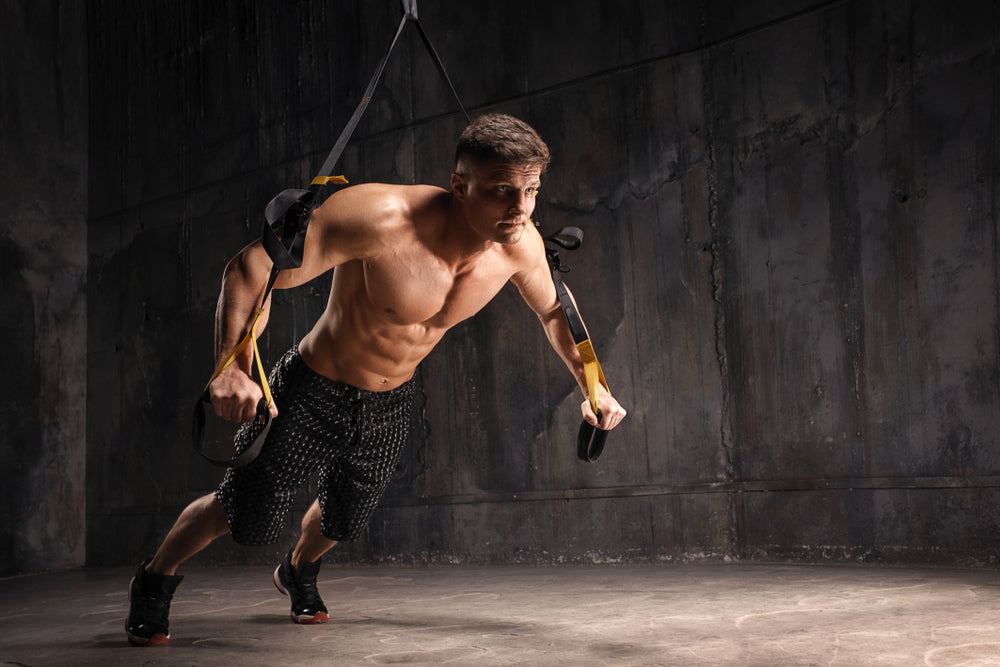
Body Transformation Plan - Male Edition
Ok guys, as promised, it's your turn to benefit from the expertise of Alwyn and Rachel Cosgrove, sought-after experts in the field of health and wellness. They have created exclusively for the TRX Community a fitness program guaranteed to help you lose body fat and/or tone up in just three weeks. (Click here to view the women's program.)
This plan is designed to be performed two to three days a week and continue to build in volume. All of the exercises should be performed at a moderate tempo. The exercises with the same number should be performed as a circuit (performing 1A, then 1B, etc.) until you finish all of the exercises with a 1, then repeat that circuit again before moving onto the next circuit.
In addition to the workout, all participants should clean up their diet for the next three weeks, eating lean protein and veggies every three to four hours and drinking half your bodyweight in ounces of water. Make a commitment not to splurge for the three week period. For more on healthy eating, check out these blog posts from nutrition guru John Berardi.
To start, take three “before” pictures (front, back and side) of yourself or the clients who’ll be participating. Men should wear shorts without a shirt. Also, take a baseline body fat measurement for all participants, and ask them each to find a pair of pants they can almost button. These measurements should be used as indicators of progress INSTEAD of a scale.
THE MALE PLANThe focus of this plan is high reps for more metabolic work, because most men never go above eight to 10 reps when it comes to their usual workouts. Want to find the right rep range for your fitness goals? Take our quick assessment quiz to get a personalized training plan. Performing 16 reps will be very challenging for most of your male clients. This plan finishes with an upper body circuit performed for eight reps to provide some extra hypertrophy for the arms and core.
TAKE OUR TRAINING QUIZ
#
Exercise
Reps
Rest
Sets
1A
TRX Lunge (w/ Touch and Hop)
16
30 secs
3
1B
TRX Inverted Row
16
30 secs
3
2A
TRX Balance Lunge to TRX Single Leg Squat
16
30 secs
3
2B
TRX Atomic Push-up
16
30 secs
3
3A
TRX Y Deltoid Fly
8
30 secs
2
3B
TRX Biceps Curl
8
30 secs
2
3C
TRX Triceps Extension
8
30 secs
2
3D
TRX Body Saw
8
30 secs
2
At the end of the three weeks, take "after" photos from the same angles as before. Also, grab those too-tight pants and try them on. Chances are, they'll now fit. Good luck to everyone who participates in this Body Transformation Plan, and be sure to encourage your clients to share their results below!
Thanks to TRX Master Trainer Rick Sewchuk for helping us out with the video!
A sought after expert for several of the country’s leading publications including a regular contributor to Men’s Health magazine, Alwyn Cosgrove has co-authored three books and currently spends his time consulting on fitness training, training clients, speaking on the fitness lecture circuit and coaching fitness trainers worldwide. Rachel Cosgrove is an author and a fitness professional who specializes in getting women of all ages into the best shape of their lives. She has her own column in Women’s Health Magazine and has also been featured in numerous health and fitness publications and also had TV appearances on Fox, ABC and WGN. For the past decade, Alwyn and Rachel have run Results Fitness in Santa Clarita, California, ranked one of the top 10 best gyms in America by Men's Health.
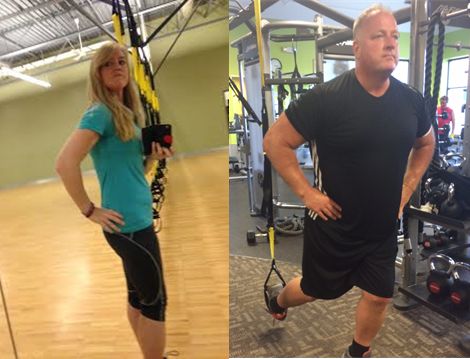
Body Transformation Blog Series - Part 1
How to Transform Your Body Using the TRX Suspension Trainer - Body Transformation Blog Series - Part 1
At TRX, we are obsessed with empowering our fans to "pursue their better." This is a blog series that will provide an in-depth exploration/explanation of how ANYONE can achieve a body transformation if they desire to. When making the decision to undergo a large-scale change to your body composition, you should always consult a medical professional for guidance before getting started.
The tips in this series are applicable to all kinds of body transformations whether that's helping those who want to lose weight, gain muscle, get lean or sculpt a specific section or their body. Not sure where to start on your transformation journey? Take our personalized fitness assessment quiz to get customized recommendations and a roadmap tailored to your specific goals. In blog #1, we'll provide an overview of the tenants of body transformation that will be discussed in detail as we move through the tips for transformation.
TAKE OUR TRAINING QUIZ
Stay tuned for more information. We encourage all who read this to share your tips with the TRX community and empower each other with positive encouragement across our social channels. Your pursuit of better inspires us all.
Introduction:
You’ve seen transformation success stories at every turn. People dropping 200 pounds or gaining 20 pounds of muscle, looking completely different from their previous physical appearance, or simply moving better and being able to enjoy life, and raving about the extra energy they have, how great they feel, the new mindset they’ve gained, etc.
Why can’t that be you? It CAN be you.
Whether you’re looking to drop weight, tone up or even bulk up, or to be able to enjoy your favorite activities again, all transformations start with a decision, a mental paradigm shift of taking ownership and embracing your vision as something that is attainable through a series of small victories that you can and WILL win. If you are looking for a change that transcends your life, the best time to consider what you want to change and how you are going to do it is always now. Remember, doing what you have been doing and expecting a different result won’t work. Here are the tenants of how to achieve the changes you are looking for in your endless pursuit of better.
#1 - The Principle of Individuality
It is critical you realize that except for identical twins, no two people have the same genetic characteristics and therefore will not respond to movement, diet and changes in their lifestyle at the same pace or with similar results. This is important because you must have realistic goals and give yourself credit for any change that is a result of your commitment to your goal of transformation. Give yourself some grace and always show yourself gratitude for what you are doing to make changes. Remember, success is often measured in millimeters, small victories that deserve to be celebrated and that generate positive momentum towards your larger goals. 2 more reps, 3% less body fat, 1 millimeter less on your waist, etc. Look for your small victories and don’t compare your wins to other people’s progress. You are on your own journey, embrace your positive results and keep your eyes on your next small victory instead of someone else’s.
#2 Nutrition and Diet
Realize that nutrition and diet play a HUGE role in a complete body transformation. We will explore important diet and nutritional considerations and techniques to be successful later.
#3 Mix Up Your Training
Maintaining variety in your training routine is a key to enhancing your performance. Staying committed to daily movement is essential for the body, mind and spirit, but selecting the right exercises at the right time is also critical for long term transformational success. As we explore the importance of understanding the five components of fitness, I’ll share some easy-to-implement exercise techniques using the TRX Suspension Trainer, which will offer you tremendous variety in your transformational program. We will explore periodization training, or progressive movement selection over time. This technique will allow you to progress at your own pace, with significant opportunity for success that will keep you engaged mentally and challenged physically. The TRX suspension trainer is a perfect tool for a total body transformation because it is portable, allowing you to take it anywhere, so no excuses. It is highly adaptable and extremely individual to any fitness goal, no matter who you are.
#4 Sleep, Rest, Recovery
The balance needed to experience training adaptations (progress) while avoiding excessive overload, inadequate recovery and even injury is tricky. The underlying causes are often a complex combination of emotional and physiological factors with training deficiencies creeping in that are highly individual, sometimes making it difficult to recognize. Most symptoms are identified only after they start, and physical function may already be suffering. Overtraining without ample time between workout rest and long-term recovery, coupled with inadequate sleep results in decreased performance capacity, burnout and injury. We will explore the signs and symptoms of overtraining, including several strategies to create your own sleep sanctuary to facilitate both short and long term recovery.
#5 The Importance of Routine
Routines help mold healthy habits and healthy habits are a catalyst for large-scale changes in how someone looks and feels when achieved. Creating realistic and consistent training, eating, hydration and sleeping routines are critical to achieving the fitness and health benefits you have or are working so hard for. The “use it or lose it” concept could not be more true, as detraining can occur in as little as 2-weeks of inactivity. Complete inactivity will decrease physiological function and performance quickly, as demonstrated in research with athletes who have been forced to halt training due to injury. For these reasons, a balance between training and recovery is necessary to avoid burnout and injury. Understanding the importance of progressive overload will enhance your ability to maintain a consistent routine that will keep you engaged and motivated to stick with while avoiding negative overtraining side effects. Several strategies exist to help build a healthy routine, and we will explore these training options in order to provide you with the essential tools to achieve the transformation you’re striving the achieve.
In future blog posts, I will isolate one element at a time and elaborate on strategies and tips on the given topic that will help create overload and promote change that is effective and progressive. Stay tuned and send us your comments and questions on Facebook!
Irene Lewis-McCormick M.S is Adjunct Faculty at Drake University, an SCW Fitness Education (SCW) Certification Master Trainer and the Education Director at Octane Fitness. An Orange Theory Fitness coach, she’s a twice published author (Human Kinetics) holding advisory board positions with Diabetic Living and the National Egg Council. Named Top 3 Group Fitness Instructor 2015 by IDEA Health & Fitness, Irene is a RYKA Ambassador and Subject Matter Expert for ACE. Irene presents education for SCW, ACSM, IDEA and NSCA. She is an SCW, TRX, Tabata Bootcamp, Barre Above, JumpSport and Octane Fitness master trainer. Certifications include SCW, ACSM, NSCA, ACE, AFAA & AEA.
Body Transformation Series, Part 1 of 7 Body Transformation Series, Part 2 of 7
Body Transformation Series, Part 3 of 7
Body Transformation Series, Part 4 of 7
Body Transformation Series, Part 5 of 7
Body Transformation Series, Part 6 of 7
Body Transformation Series, Part 7 of 7
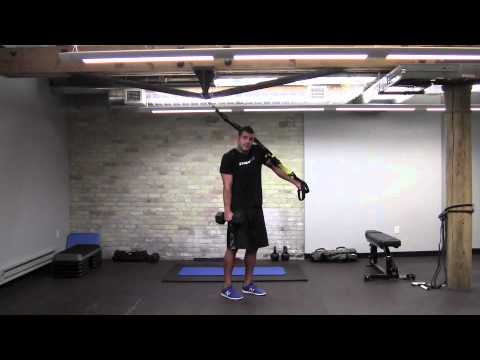
BJ Gaddour's TRX Push/Pull Core Workout
One of the great things about the TRX is that is fuses so seamlessly with other training tools to enhance classic fat-burning, muscle-building exercises. Want to find the perfect combination of TRX and dumbbell exercises for your fitness level? Take our quick assessment quiz to get a personalized training plan. Take the dumbbell, for example. Two classic movements are rows and presses to smoke your upper body. But if you combine the TRX with these two moves, you'll instantly make your abs work harder and get more muscles involved. Give this TRX Push/Pull Core Workout from fitness bootcamp and metabolic training expert BJ Gaddour a shot. Here he does a superset with the TRX Single Arm Plank and the Single Arm DB Row with the TRX Single Arm Row and the Single Arm DB Press. BJ suggests alternating between 30 seconds of work and 15 seconds of rest for each exercise.
TAKE OUR TRAINING QUIZ
BJ Gaddour, CSCS, is fitness bootcamp and metabolic training expert. He is the CEO of StreamFIT and a contributor to Men's Health.
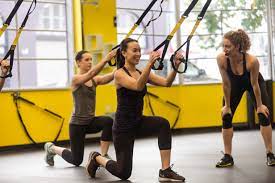
Best Practices for TRX Group Training, Ask the Professor
Trainees want workouts to be challenging, and with the TRX, it's easy to provide that challenge. Anyone can push trainees to go harder, faster and for longer. But “good” training should do much more than just provide an intense conditioning challenge. It should help trainees to build sound movement patterns before moving on to strength, power and metabolic components. So what's the best way to approach programming and teaching TRX training? This is one of the fundamental questions we at TRX honed in on while developing the TRX®TEAM™ group training concept. We considered every angle of what goes into developing effective TRX instructors capable of providing a fun, effective, time efficient challenge to trainees that's rooted in developing proper movement patterns.
Ultimately, we came up with FLAC, an acronym that encompasses what we've discovered to be the best practices for instructing all TRX trainees, whether they're young, elderly, beginners, experts, elite athletes, tactical operators or anywhere in between on the fitness spectrum. FLAC stands for: Focus, Learn, Apply, Challenge. In a nutshell, FLAC means teach a skill first before adding strength, tempo, power or stability challenges. Whether you're a TRX®TEAM™ trainer, a personal trainer working with individual clients or you train solo on the TRX, we recommend using the FLAC method to make the most of your training time. Here's a closer look at the concepts behind these four simple words and how you can use FLAC to help yourself and others train on the TRX.
F=FOCUSAt the beginning of the workout, the focus should be on learning movements in an appropriately unloaded position that allows the trainee to learn at an intensity level well below fatigue threshold. Trainees should be taught to move consciously in order to learn the movement patterns they need to successfully tackle the same movements at a higher metabolic intensity or with a greater stability or resistance challenge.
Instructors should use simple, comprehensible cues that help trainees to master the basic movement patterns they will use later, at a higher intensity. First the instructor describes and demonstrates the appropriate start, midpoint and end position for the movement. Then the trainees experience these points as isometric holds with the help of cueing from the instructor. Early on in the workout/program, the focus is on movement—what joints should be stable, which should be mobile, what muscles should be working, how the core and whole body should be engaged and involved in the movement.
L=LEARN“Learn” means enabling trainees to learn an effective progression. During this phase, trainees apply what they learned in the “focus” phase and set it in motion at a low tempo. This allows trainees to find the appropriate stability, vector and pendulum challenges for the movements they will use during the “apply” phase of the workout. If a trainee is unable to do a TRX Single Leg Squat with appropriate form, this is the time to demonstrate how to regress the movement so that it's something the trainee can successfully execute with good form. This is also the time to help the trainee dial in the appropriate level of resistance with movement away from or toward the anchor point. All the while, the instructor watches and cues to ensure trainees use appropriate movement patterns.
A=APPLYDuring this third phase, trainees apply what they've learned during the first two phases to the workout. Trainees now know what the movements should feel like, what joints should be moving, what parts of the body should be stable and what muscles should be firing or contracting, and they can put this knowledge into motion.
C=CHALLENGEDuring the final phase, the instructor increases the tempo, adds explosive movement to the foundational movements the trainees learned or increases the resistance or stability demands of the movements. This is the appropriate portion of the workout for turning up the heat and hitting trainees with a metabolic challenge.
The ultimate goal of the FLAC approach is to teach trainees proper fundamental movement patterns or skills (i.e. pushing, pulling, squatting, lunging) while also providing a conditioning challenge. We've found this to be the optimal approach for instructing trainees on the TRX.
Learn more about TRX®TEAM™ and the R4 solution.
As the resident TRX Professor, Chris Frankel draws from over 25 years of experience as a strength and conditioning coach. He earned an MS in Exercise Physiology from the University of New Mexico, where he is currently completing his doctorate in Exercise Science. Before taking the position of Director of Programming at TRX, Chris was an instructor in the Department of Health, Exercise and Sport Sciences at the University of New Mexico.

12 Medicine Ball Ab Workouts You Can Do Anywhere
Medicine balls have long been recognized as invaluable tools in fitness due to their versatility, effectiveness, and ability to target multiple muscle groups simultaneously.
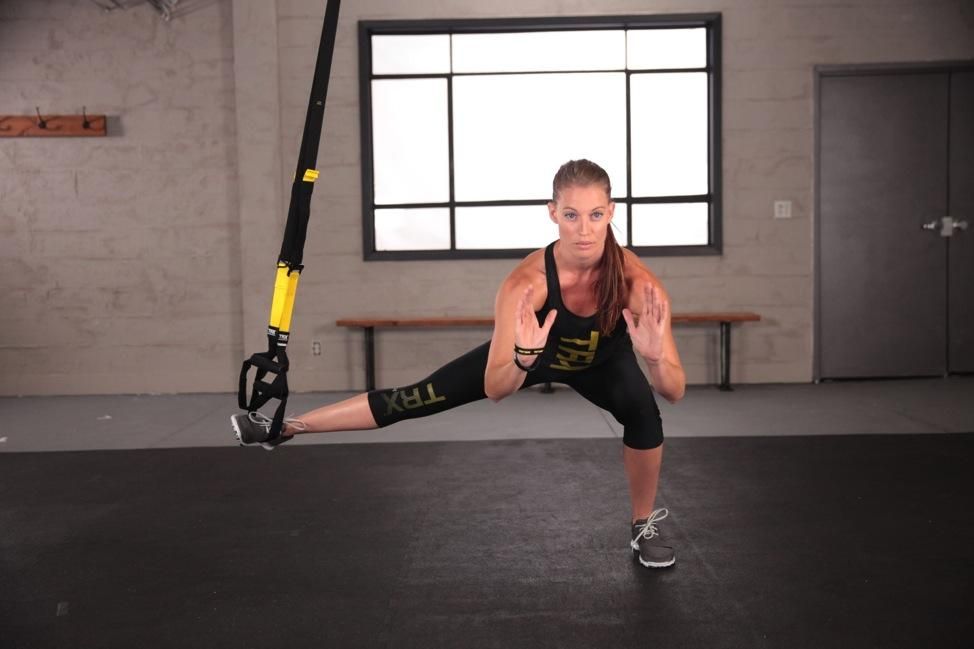
Best Moves on the TRX Suspension Trainer
Transformation Series, Part 7 of 7
“The following sequences are some of my favorites, using time-based sequences to manipulate intensity.”
What moves are the best for firing up your metabolism to activate the maximum amount of muscle and focus on the greatest caloric expenditure? One of the best options – time-based, high intensity intervals. In my latest book, The HIIT Advantage for Women (Human Kinetics, 2015), I use time as the acute intensity variable for all the exercise protocols. The following sequences are some of my favorites, using time-based sequences to manipulate intensity. Try these exercises, and then I’ll share a workout sequence you can use to put them together for an amazing, quick and effective training session to get the absolute best calorie blast from your TRX workout.
TRX Unilateral Hip Challenge
This round includes three exercises for the same muscle group. Want to find the perfect single-leg exercises for your strength level? Take our quick assessment quiz to get a personalized training plan. It is an advanced pattern, requiring balance on one leg for an extended period of time, 90-seconds or so. Use - 30-45-seconds for each move, or try a rep range of 8-12 for each of the three moves.
TAKE OUR TRAINING QUIZ
1) TRX Abducted Lunge. Adjust the straps to mid-calf length in single handle mode and stand sideways to the anchor point,. With your right foot in the foot cradle, be sure to internally rotate the hip and plantar flex the ankle to maintain spinal extension and tension in the gluteals. Hinge at the hip and flex at the knee until you can reach with the inside arm (closest to the anchor point), fingertips to the floor on the outside of your grounded foot. Meet that standard (hip hinge, spinal extension and touch the floor) with each attempt. Rise back upright and repeat.
2) TRX Lunge. Move immediately into the TRX lunge. Stand facing away from the anchor point with your foot in the foot cradle. Set this lunge position from the ground up. Align knee directly over ankle, back knee on the floor with foot in the foot cradle; fingertips touching the floor to the sides of each foot. Focus on weight load in the front leg, translating it back up and into the gluteals, then rise and drive upright into a standing position. Come back down to the ground each and every rep, gently touching the back knee to the floor, as this standardizes the movement. No cheating. Arms can be used for balance, or for a more precise, athletic, specific challenge. Pull the arms through the sagittal plane, as if running the last 10 meters of a 100-meter run. Go as slowly as necessary in order to stay in control.
3) TRX Crossing Lunge. Move immediately into the crossing lunge. You will have to turn sideways to the anchor point. This can get confusing, because you will be facing the opposite direction from which you began the exercise. This crossing lunge looks like a curtsey lunge, so allow the suspended foot (back leg) to float towards the anchor point as you reach to the floor with both hands, fingertips touching the floor on either side of the grounded foot. Go slow, take your time, and maintain a stable, neutral spine as you hinge at the hip and flex at the knee. At this point, your balance will be challenged and muscles will become fatigued, but the expectations of precision in movement are no less than at the start. Once you have performed this sequence, switch legs and repeat on the other side.
Tabata-Timing TRX Plank Series
This plank series is very challenging and since the timing sequence is so quick and demanding, it is important to alternate the forearm plank with the prone plank to take full advantage of the core challenge without putting the wrists and shoulders at risk for overuse. Since it is in Tabata-timing, each of the eight exercises is performed for 20-seconds, with 10-seconds to recover and transition to the next exercise. Perform exercise #1, #2, #3 and #4, and then repeat them again for exercises #5, #6, #7, and #8 just changing sides when possible. TRX should be at mid-calf length, toes in, ground facing away from the anchor point. Remember to use the pendulum principle to select the appropriate level of intensity to perform each move to standard. Note, you should practice each move individually and become competent before combining them into this challenging sequence. Never compromise quality of position for quantity of movement, time or volume.
● Exercise #1 – Right Forearm side plank with top arm reaching up
● Exercise #2 – Right Forearm side plank with hip drop (place top hand on hip)
● Exercise #3 – Crunch with Body Saw
● Exercise #4 - Plank
● Exercise #5 – Left Forearm side plank with top arm reaching up
● Exercise #6 – Left Forearm side plank with hip drop (place top hand on hip)
● Exercise #7 – Crunch with Body Saw
● Exercise #8 - Plank
TRX 30, 20, 10 Arm Blaster
Another time-based, high-intensity interval protocol, this arm series will surely have you pursuing your better . Place the TRX in single handle mode at mid-length and stand facing the anchor point.
30 seconds – Single right arm low row
20-seconds – Power pull right
10 seconds – Single right arm biceps curl (stand sideways to the anchor point for this one)
Repeat using the left arm
30 seconds – Single left arm low row
20-seconds – Power pull left
10 seconds – Single left arm biceps curl (stand sideways to the anchor point for this one)
TRX Hard, Harder, Hardest, Squat - Lunge Series
This lower body sequence uses time as the intensity variable in a 2:1 ratio, meaning there are built-in recovery intervals that are half as long as the work intervals; this recovery time is great because you will need it! “Hard” corresponds with a 40-second work interval with 20 seconds of recovery. “Harder” is a 30-second interval, with 15-seconds to recover. The last “Hardest” interval is 10 seconds on, with 5 seconds to recover and transition to the next exercise sequence. To begin, adjust the straps to mid length and stand facing the anchor point.
Squat Sequence
40 seconds Hard – Squat
30 seconds Harder – Single leg squat right
10 seconds Hardest – Squat jump
Repeat (left side for single leg squat)
Lunge Sequence
40 seconds Hard – Assisted lunge right
30 seconds Harder – Alternating step back lunge
10 seconds Hardest – Cycle lunge
“Put them together for an amazing, quick and dirty training session to get the absolute best calorie blast from your TRX workout.”
TRX Workout
Try this sequence of exercises as follows. If you would like to insert a cardio sequence in between each exercise, I will indicate that in the workout - or you can simply try these TRX moves all together.
Warm up to increase the core body temperature, lubricate the joints, and prepare the body for more intense activity.
TRX single leg hip challenge right
TRX single leg hip challenge left
Try a 3-5 minute aerobic cardio interval (treadmill or elliptical trainer) at a speed that is intense enough to cause you to feel uncomfortable.
TRX 30, 20, 10 Arm Blaster
*Repeat this sequence right arm, left arm, right arm, left arm. If you are up for it, try right arm and left arm one more time, for a total of three arm blaster sets. Take 1-2 minutes between each set.
Try another 3-5 minute aerobic cardio interval (treadmill or elliptical trainer) at a speed that is intense enough to cause you to feel uncomfortable.
TRX Hard, Harder, Hardest, Squat Lunge Series
*Perform the 40, 30, 10 squat sequence first, then the 40, 30, 10 lunge sequence second.
Try another 3-5 minute aerobic cardio interval (treadmill or elliptical trainer) at a speed that is intense enough to cause you to feel uncomfortable.
Tabata-Timing TRX Plank Series
Cool down and stretch
Irene Lewis-McCormick M.S is Adjunct Faculty at Drake University, an SCW Fitness Education (SCW) Certification Master Trainer and the Education Director at Octane Fitness. An Orange Theory Fitness coach, she’s a twice published author (Human Kinetics) holding advisory board positions with Diabetic Living and the National Egg Council. Named Top 3 Group Fitness Instructor 2015 by IDEA Health & Fitness, Irene is a RYKA Ambassador and Subject Matter Expert for ACE. Irene presents education for SCW, ACSM, IDEA and NSCA. She is an SCW, TRX, Tabata Bootcamp, Barre Above, JumpSport and Octane Fitness master trainer. Certifications include SCW, ACSM, NSCA, ACE, AFAA & AEA.
Body Transformation Series, Part 1 of 7 Body Transformation Series, Part 2 of 7
Body Transformation Series, Part 3 of 7
Body Transformation Series, Part 4 of 7
Body Transformation Series, Part 5 of 7
Body Transformation Series, Part 6 of 7
Body Transformation Series, Part 7 of 7

Barefoot Training with TRX
Master the Spread and Foot Fists
Going shoeless for TRX Training or slipping into minimal sneaks that allow your feet to articulate as they would if they were barefoot can help you get the same critical feedback and movement enhancement from your feet that you get from training with bare hands. In life and often in training and sport, our feet are our primary point of contact with the planet and our chief feedback mechanism for many movements.
Whether you're a longtime barefooter or just making the transition, here are two techniques you can use to get the most from your barefoot training. Before trying these techniques, take our quick form assessment quiz to get personalized recommendations for transitioning to barefoot training safely.
TAKE OUR TRAINING QUIZ
Spread to Engage
The more time you spend moving and training barefoot, the more you will notice that your toes and the bones in your feet want to spread out wide. This spread helps absorb shock when you’re moving. When you’re in a static standing position, the wider your toe spread, the more engaged your feet and body will be and the greater your base of support for movements performed in a standing position.
It takes time for the muscles and connective tissue in your feet to adapt to their new freedom, but from day one of your barefoot experience, dedicate a few minutes to paying attention to your feet and how they move. It doesn’t have to be during training either. Kick your shoes off under your desk and practice spreading out your toes as wide as possible. Pay attention to how the spread impacts the manner in which the muscles in your calves and the rest of your body activate and engage.
Foot Fists
Once you’ve mastered the spread the next step is to learn how to forge effective foot fists. Foot fists don’t look or feel like the fists we make with our hands. To make foot fists, imagine your toes being fingers that are gripping the ground as hard as possible while maintaining a wide toe spread. This will enhance your balance and stability during standing unilateral movements and create greater whole-body engagement and awareness.
Give these techniques a try and pick up your TRX Suspension Trainer if you haven't already.
For more functional training workouts, click here.
We look forward to hearing what you’ve learned from your odyssey into the kicks-free zone.
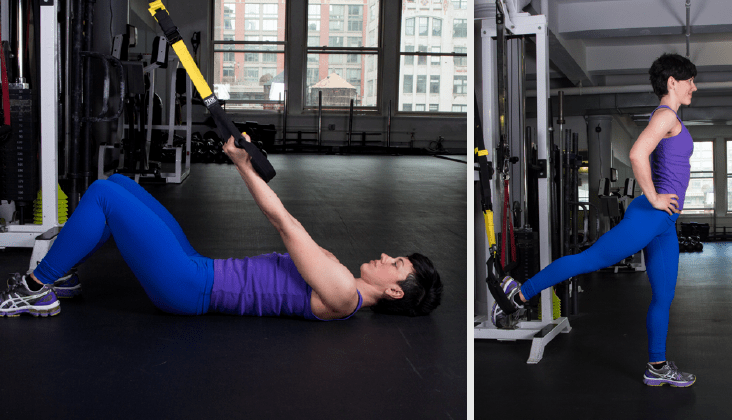
Ask the Trainer: TRX Directory
Wondering how to find a TRX Trainer near you? The answer to this question is now at your fingertips, with the help of our recently released TRX Directory.
The TRX Directory will contain listings for hundreds of TRX Suspension Training Course graduates, as well as our partner facilities, all over the world. It is also your primary source to find facilities that offer TRX classes near you. Whether you’re at home or on the road, the TRX Directory puts TRX trainers and facilities at your finger tips. You can search by name, city or ZIP code and you can refine your searches as you go.
Also, if you’re a personal trainer, the TRX Directory makes it easy for potential clients to learn about your training background, specialty and expertise, allowing you to expand your network and grow your business.
If you would like to become part of the TRX Directory, take a TRX Professional Education Course, and you will be invited to join. Offered worldwide, these one day courses are designed to teach you the skills required to effectively set up and use the TRX Suspension Trainer. You’ll learn how to adjust exercise resistance and stability levels to create an appropriate challenge, whether for yourself or when you’re working with clients.
Being able to connect with TRX trainers in your area will help you to not just increase your knowledge of the TRX, but it will be a great way for you to network and use these trainers as a resource when you’re working out on the TRX.
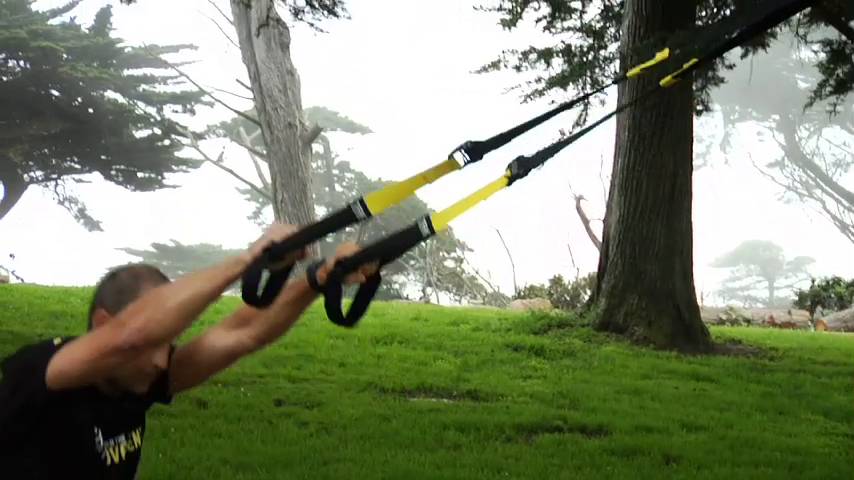
Ask the Trainer: Six TRX Training Sins
There are things in life we’re taught to avoid. Black cats, for example. And strangers with candy. Processed food. The Interstate during rush hour. Procrastinating. Talking about politics with your new girlfriend’s parents. The plague.
Well, there's something else out there you should be avoiding at all costs, something that, if left unaddressed, could result in poor exercise technique, less-than-stellar results and even injury. That something is what we call the six TRX sins, a list of the most common ways people compromise their TRX workouts with incorrect form and/or technique.
In this installment of Ask the Trainer, Education Manager Steve Katai describes each of the six TRX sins and offers ways to correct them. Want to perfect your TRX form? Take our quick assessment quiz to get personalized technique tips that help you avoid common mistakes. Here are the six sins below (in no specific order):
TAKE OUR TRAINING QUIZ
Sin #1: Starting (Incorrectly)
Example Exercise: TRX Y Deltoid FlyAdjust the TRX appropriately for all exercises by first finding the correct end point, body position and proper foot stance for the movement.
Sin #2: Stopping
Example Exercise: TRX Mid RowIf you’ve bitten off more than you can chew and you’ve started an exercise at too steep an angle, don’t just stop the movement. Adjust your body angle to make the exercise easier if you start to feel fatigued.
Sin #3: Sawing
Example Exercise: TRX Hamstring RunnerRepeat after me: the TRX is not a pulley. To avoid sawing, exert even pressure on the handles or foot cradles of the TRX. Never allow the handles to saw back and forth.
Sin #4: Scraping
Example Exercise: TRX Chest PressWhen performing an exercise on the TRX, the straps should never rub against your arms. To eliminate scraping, simply raise your hands slightly while performing the movement.
Sin #5: Slacking
Example Exercise: TRX Overhead Back ExtensionIf the TRX is slacking, so are you! Maintain tension on the straps throughout each movement.
Sin #6: Sagging
Example Exercise: TRX PlankWhen you’re tired, it’s more difficult to hold your body in alignment. If your hips are sagging, remember to engage your core and maintain body alignment during all exercises where your body is in a plank position.
So there you have it, the six TRX sins. Study the video above so you're able to recognize when you (or your clients) engage in these sinful behaviors and learn the ways to correct them.
